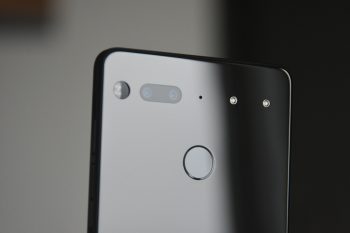
Two years with the Essential Phone has me excited for its successor
In the very beginning, Andy Rubin created Android. Yes, this man is the creator of our favorite smartphone operating system. And when he left Google, he decided to build his own phone.
That phone ended up being the Essential Phone. Model number PH-1 (get it, PH-ONE?), it was released in Q3 of 2017 to mixed reviews. It featured a revolutionary 5.71-inch display with wildly thin bezels (still some of the thinnest on the market aside from the chin) and a notch. Yes, this phone introduced the world to the notch, though it remained the best and cleanest implementation of the notch for a long time after release.
Other specs include a Snapdragon 835, 4GB of RAM, 128GB of storage, Android 7.1 Nougat, dual 13MP color and monochrome camera sensors, Bluetooth 5.0, a USB-C port, a rear-mounted fingerprint sensor, a 3,040 mAh battery, and 27W fast charging via USB-PD.
For 2017, these were amazing specs. The inclusion of 128GB of storage was awesome, the 27W fast charging was the highest wattage on the market, and the build quality was just phenomenal. The frame was made out of polished titanium, which wouldn’t dent when dropped and wouldn’t shatter the glass display. The rear was a sheet of mirror ceramic. It was blocky, it was heavy, it was durable, and it felt amazing. It’s still one of the best built phones ever made.
It also had absolutely no logos: No company logo, no FCC data, nothing. Everything was in a small tag inside the SIM tray. It gave it an even cleaner, sleeker look that’s still adored to this day.
Modularity was promised with two power pins, a short-range wireless communication standard, and a strong magnet. The first accessory was a 360 camera that just snapped onto the device. The images were pretty poor quality but it was a lot of fun to use. Then there was the limited edition Audio Adapter HD, made from a single piece of milled titanium and containing a competent DAC/amp inside. It added a headphone jack capable of powering high-end headphones but was sold in limited quantities.
Though the build quality was amazing, the specs were high end, and the software was pure and stock, the performance was stuttery and the camera was pretty bad at launch. The device didn’t end up selling well, despite a price drop and many sales. Nonetheless, it won a lot of hearts and some enthusiasts use it to this day.
In the months after launch, the device received countless updates with many improvements to performance, connectivity, and imaging. The camera went from bad to pretty good, even competitive with other devices at the time. There were also monthly security updates to look forward to, always being released the same day as the Pixel devices (and often people who owned both received the Essential update first). The device also received two upgrades to Android, those being Oreo and Pie, as well as betas for both versions. The device was chosen to be one of the few to receive developer previews for Pie!
So where are we two years later? The device is no longer on sale but it has a loyal user base. It’s on the absolute latest version of Android at all times. My personal device is still kicking since launch and is running Android Q Beta 4 like it’s brand new. The camera is performing well, especially with the latest ported GCam. Night Sight is a blessing and works great despite being unofficial. The stutters aren’t gone, but they’ve been improved. The device was truly ahead of its time, displaying many traits that would not become popular for over a year.
Compared to a Pixel 3a, the Essential Phone is definitely faster. The Pixel is substantially smoother and more buttery, but it also looks ancient compared to the PH-1 thanks to the huge bezels and forehead. The plastic body also pales in comparison to the amazing build quality of the Essential. The PH-1 holds up to this day and is a pleasure to use.
Andy Rubin has broken Essential’s radio silence and said that there will be an announcement from the company. Could it be a new smartphone? We really hope so, because there’s so much to love about the PH-1. If a PH-2 is released, we would love to see the same innovation as before. We recently saw cameras being placed under the display panel, so a PH-2 with that tech would be killer. Maybe it’ll be compatible with the same accessories released for the PH-1.
But most of all, we hope it’s not a wild departure from what we love. Stock Android, instant updates, top of the line materials, and amazing design. The Essential Phone was a financial failure due to a few major flaws and some serious hate from the media. Maybe with some improvements and some better marketing and press, the company could see a real success.